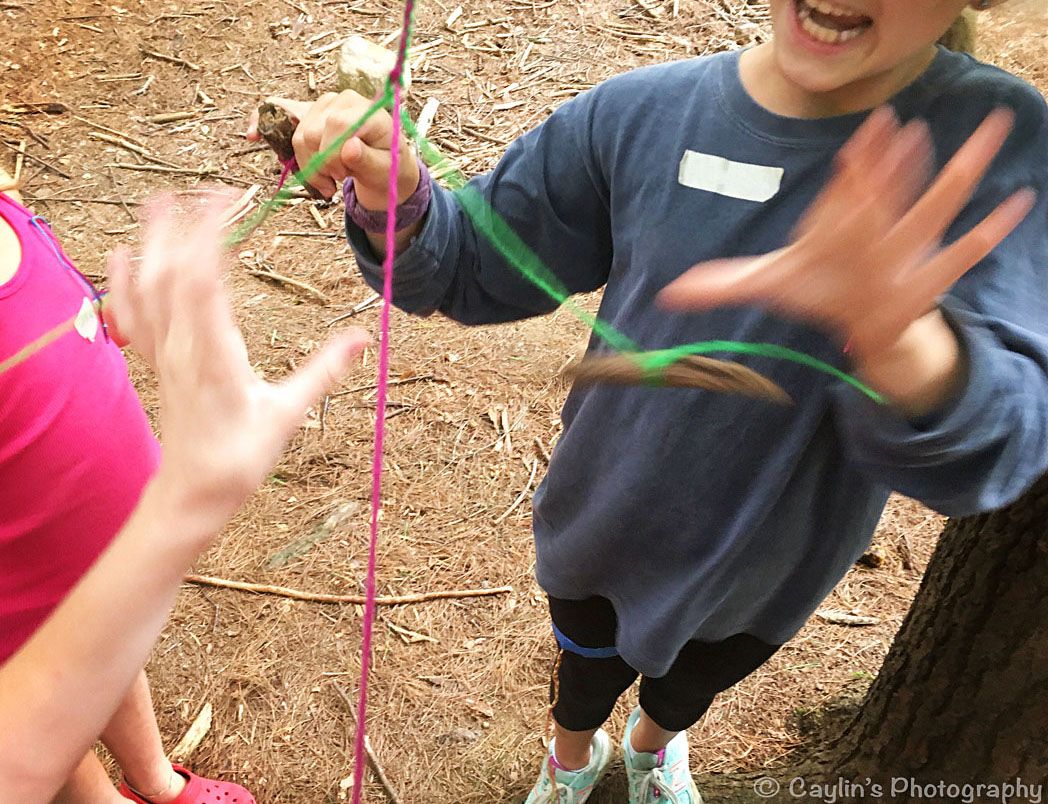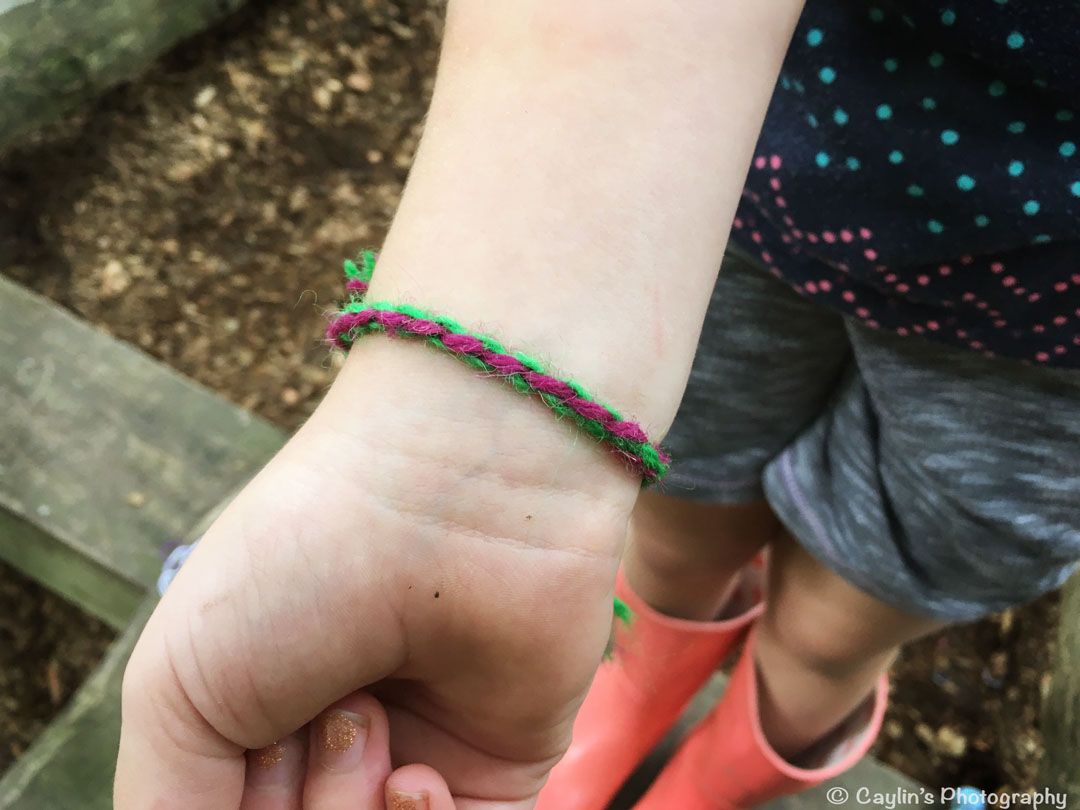
Blog
Stories from my personal journey learning about and delivering Nature-rooted programs across three different countries
Bickering? Or bracelets?
Caylin (Forest Schooled)

Empty space, drag to resize
Making bracelets. That can be such a popular activity for young people, or anyone really! Perhaps there's something about getting absorbed in a repetitive knot-tying process that eventually becomes a beautiful and wearable product that makes it an appealing activity. It can be a social pastime too. Although each individual might be focused on creating their own bracelet, often several bracelet-makers will sit together and chat as they work away.
While I was working with a group of 8 to 9 year olds recently, I noticed some of the girls were particularly into making bracelets. They were also particularly into bickering...
Their disagreements would sometimes tear the group apart, leaving one (or sometimes more!) of the girls in tears. I'd sit with them, talk it out, and soon they'd all be playing together again... until a different situation would initiate a new argument and the split would happen again. It became somewhat of a pattern - sometimes they were a happy group of friends, other times they were as divided as sliced pieces of pie!
Now back to the bracelets... In response to the bracelet-making frenzy I thought I'd throw a new method into the mix, a method I'd learned at a Forest School conference a few years ago called Nordic slinging. This is a form of braiding that requires at least two people to achieve. Four lengths of string are hung above head height with weighted objects attached to each one at the bottom. Each person grasps two strings and then begin swinging them across to each other in a coordinated way, creating a braid. (For a more detailed description of how to do this, here's a wonderful blog explaining how to do nordic slinging)
One of the best things about Nordic slinging is the communication and teamwork involved in the creation of the braid. The two partners need to swing their strings across to each other at the same time and therefore need to come up with a cue to know when to do this. In my experience, this often starts with one or both partners using verbal cues, like calling out the colour of the string that should be swung next (if using different colours). But, eventually, most will just fall into a silent rhythm, the timing of each swing evenly spaced like the beating of a drum. The silence is occasionally punctuated by fits of giggles or snorts of frustration when one (or both) partners fail to catch a string and it flails around wildly out of control, sometimes getting tangled and creating new problems to solve! It's a brilliant activity that develops a lot of skills as well as encourages social bonding.
So, I set up a nordic slinging area in a section of the woods and just as soon as I had a finished tying it all up to a tree, the girls came wandering over asking, “What's that?” I gave them a little explanation, showed them how it worked, and they all enthusiastically started to give it a try. They soon got the hang of it and it became an activity they would leave and return back to throughout the week we spent together.
Now, back to the bickering... by this point there had been arguments about sharing hammocks, about sharing tents at a sleep over, about deciding rules to games, even about who gets to accompany who to the bathroom! (We had a buddy system...). But I noticed they never seemed to argue about making bracelets.

Eventually the bickering got so bad that I decided to address it more directly. I invited them all to sit with me in a circle and I asked them to first think about some positive ways to deal with someone or something that's bothering them. I gave them some time to think and when they were all ready, I passed around a talking stick so that the person holding the stick would be given the entire floor to speak their thoughts without interruption.
Their answers included suggestions like walking away and taking space to calm down, asking an adult for help, or communicating their feelings in a respectful way, such as, “Please stop, I don't like it when you put your feet in my face when we're on the hammock...”
Their answers included suggestions like walking away and taking space to calm down, asking an adult for help, or communicating their feelings in a respectful way, such as, “Please stop, I don't like it when you put your feet in my face when we're on the hammock...”
The next thing I asked them to do was think of something they really liked and admired about the person to the left of them in our circle. I asked them to think more about personality traits rather than something superficial, like their clothing or hair colour. Again, we passed around the talking stick and they shared some truly thoughtful things, expressing their appreciation for each other’s kindness, creativity, and ability to make people laugh. When the stick had made it around the circle, hands were waving in the air requesting to share more about what they admired about others in the circle... And so it continued: For being good listeners, for comforting them when they were sad, for sharing their snacks. It went on and on and was a refreshing contrast to the bickering that had formerly plagued the group.
I'm not going to claim our circle time solved all their problems, but it did push a reset button that allowed the girls to put things in perspective and acquire skills for dealing with their emotions. As cheesy as it sounds, we finished off our circle with a big group hug. And then we got back to making bracelets...
More Posts
WANT TO GET FOREST SCHOOLED TOO?
Subscribe to my email letters, something special from me to you so we can learn together. Each one is filled with heart-felt stories from the forest, resources you may find useful, and things that hopefully bring a smile too.
Thank you!
© by FOREST SCHOOLED
